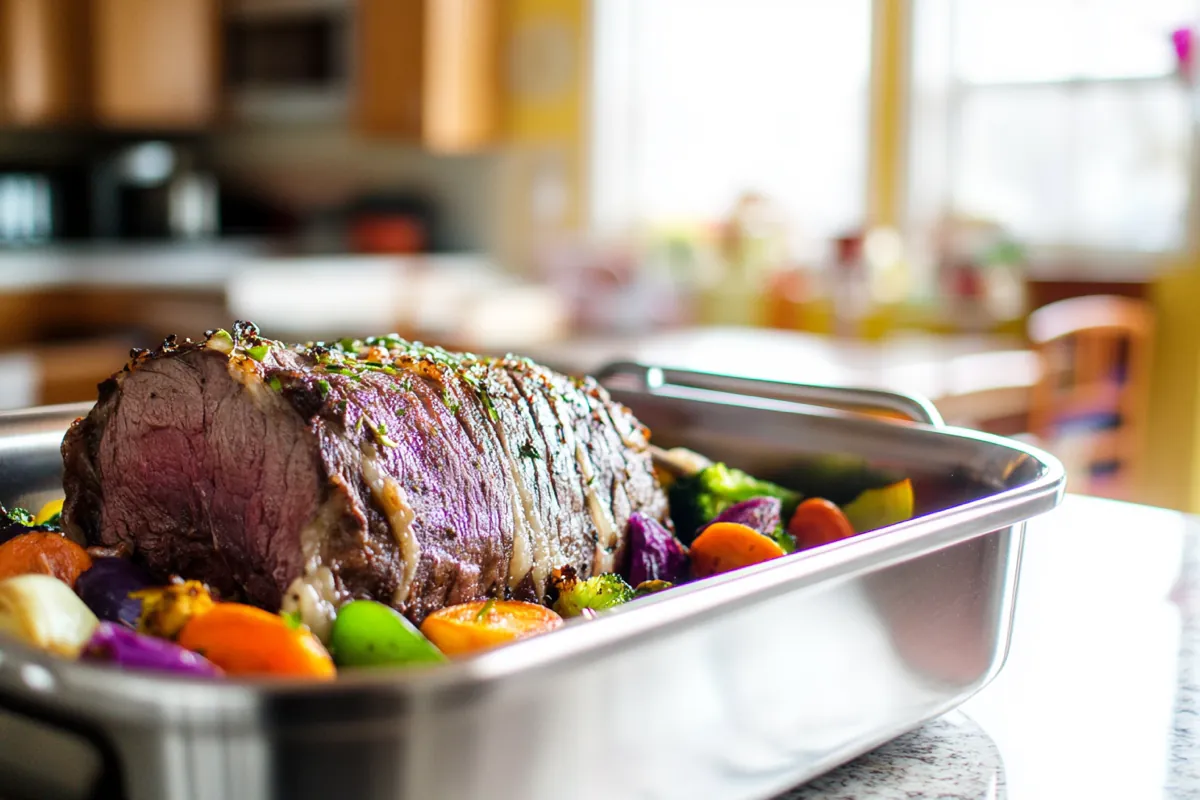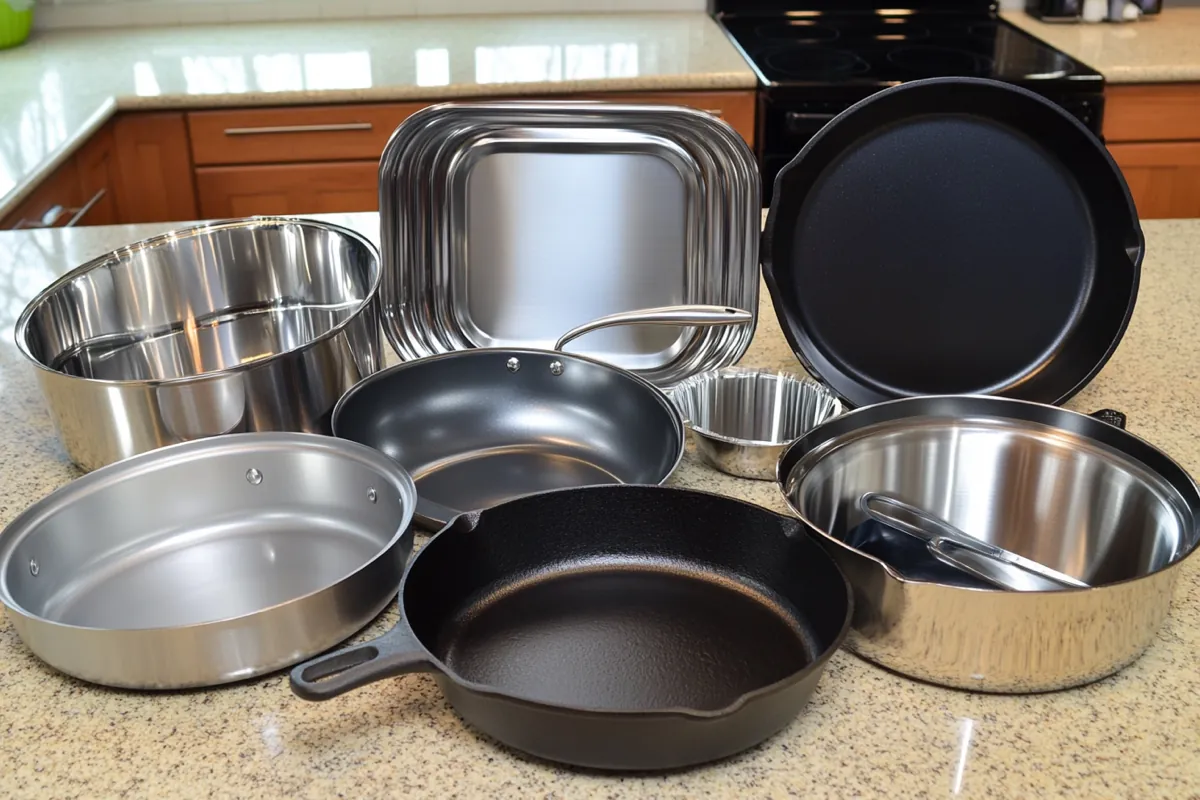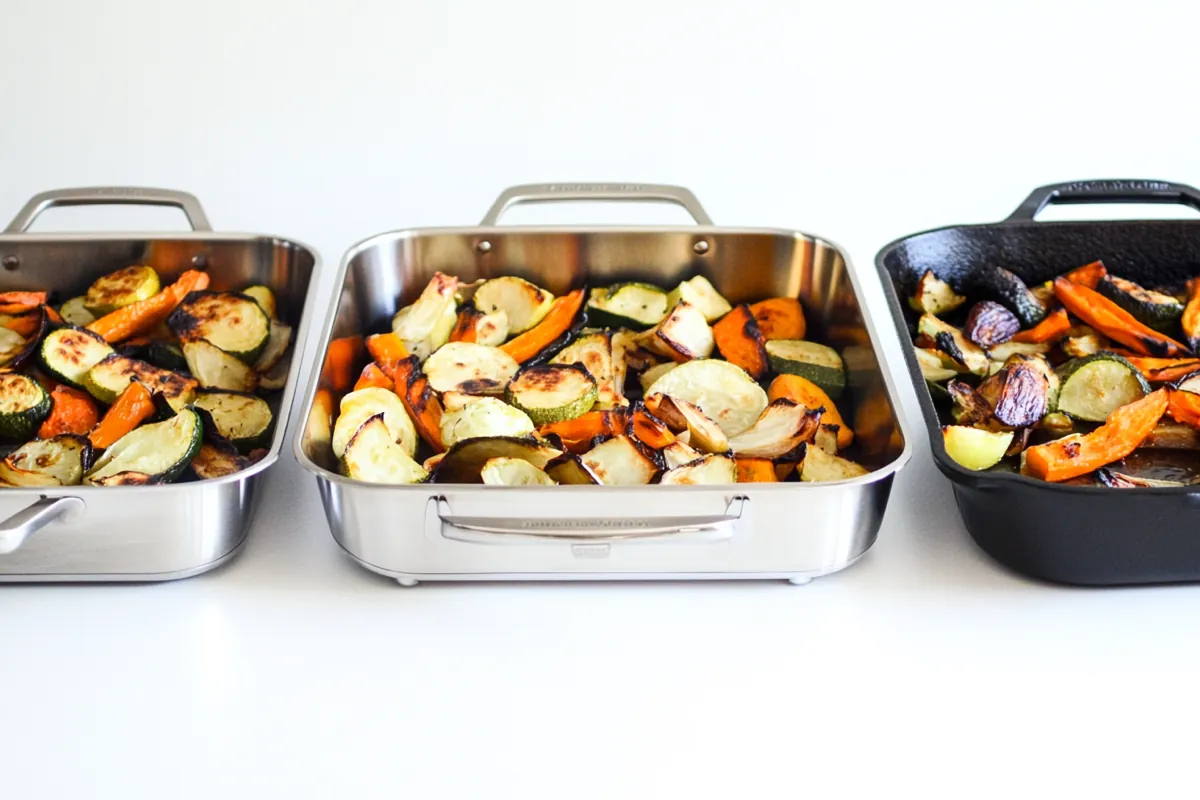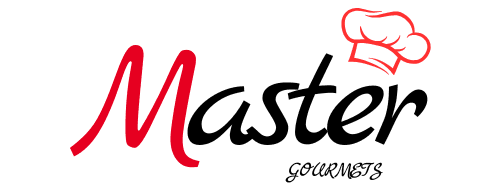If you love cooking, understanding kitchen tools is essential. One of the most versatile and practical tools you can have is a roasting pan. But what is a roasting pan? In this article, we will explore its definition, uses, materials, appearance, and recommendations for the best roasting pans.
Table of Contents
Introduction to Roasting Pans
Roasting pans are large, rectangular pans designed for cooking meats and vegetables in the oven. They typically feature low sides to allow hot air to circulate, ensuring even cooking. Knowing how to choose the right roasting pan can make a significant difference in your culinary adventures.
Definition of a Roasting Pan
A roasting pan is a flat, oven-safe container, often made of metal or glass. Its primary purpose is to hold food while it cooks. The design usually includes a sturdy base and low sides, which help in browning and crisping the food evenly. Roasting pans often come with a rack, allowing grease or juices to drain away from the food during cooking.
Importance of Roasting Pans in Cooking
Roasting pans are crucial for several reasons. First, they allow for even cooking, which is essential when preparing large cuts of meat. Second, the low sides enable browning, enhancing flavor and appearance. Lastly, roasting pans can hold a variety of foods, from vegetables to casseroles, making them versatile kitchen tools.
What is a Roasting Pan Used For?
Roasting pans serve multiple purposes in the kitchen. They are primarily used for roasting meats, but their utility extends to various cooking methods and dishes. Understanding these uses will help you appreciate this essential kitchen tool even more.
Common Uses of Roasting Pans
Roasting pans are commonly used for:
Roasting Meats: The most popular use, roasting pans are perfect for turkey, chicken, and other large cuts of beef. The low sides allow heat circulation, ensuring even cooking and a beautifully browned exterior.
Vegetables and Other Dishes: Besides meats, roasting pans can also accommodate a variety of vegetables. Roasting enhances their natural flavors and creates a delightful caramelization.
Special Techniques
In addition to standard roasting, there are special techniques you can use with roasting pans.
Braising and Slow Cooking
Braising involves cooking food slowly in a bit of liquid. A roasting pan is an excellent tool for this method, as it can accommodate both the food and the liquid, allowing flavors to meld beautifully.
Baking and Broiling
Although primarily used for roasting, roasting pans can also be used for baking and broiling. Their sturdy design makes them suitable for various oven tasks, from casseroles to baked pasta dishes.
In conclusion, a roasting pan is an essential kitchen tool that enhances your cooking experience. Whether you’re preparing a holiday feast or a simple weeknight dinner, knowing how to utilize this versatile pan will elevate your culinary skills.

What is a Roasting Pan Made Of?
Understanding the materials used in roasting pans is crucial for selecting the right one for your kitchen. Different materials offer various benefits and considerations, impacting your cooking experience and results.
Common Materials for Roasting Pans
Roasting pans are crafted from several materials, each offering unique properties. Here are the most common types:
Stainless Steel: This material is highly popular due to its durability and resistance to staining. Stainless steel pans provide excellent heat distribution, making them ideal for roasting meats. They are also dishwasher-safe, which simplifies cleanup.
Non-stick Coating: Non-stick roasting pans are designed to prevent food from sticking, making them easier to clean. However, they may not withstand high temperatures as well as other materials. It’s essential to check the manufacturer’s guidelines to avoid damaging the coating.
Cast Iron: Known for its outstanding heat retention, cast iron pans provide even cooking and browning. While they are heavier than other options, they are incredibly durable and perfect for long roasting sessions. Cast iron pans often require special care, including seasoning to maintain their non-stick qualities.
Ceramic and Glass: Although not as common for heavy-duty roasting, ceramic and glass pans are elegant options. They can be excellent for roasting lighter dishes or baked goods, but they may not distribute heat as evenly as metal pans.
Advantages and Disadvantages of Each Material
When choosing a roasting pan, consider the following factors:
Durability and Maintenance
Stainless Steel: Highly durable and resistant to scratches, stainless steel pans can last for years with proper care. They are easy to clean, and many are dishwasher-safe.
Non-stick Coating: While easy to clean, non-stick pans can wear out over time. Avoid using metal utensils to prevent scratching the surface.
Cast Iron: Extremely durable, cast iron pans can last a lifetime if properly maintained. However, they require regular seasoning and careful cleaning to avoid rusting.
Ceramic and Glass: These materials are beautiful and often microwave-safe, but they can chip or crack if dropped. They are generally easy to clean but may not perform as well in high-heat situations.
Heat Distribution and Cooking Efficiency
Stainless Steel: Offers excellent heat distribution, ensuring even cooking. However, it may not retain heat as well as cast iron.
Non-stick Coating: Provides good heat distribution but may not be suitable for all cooking methods, especially those requiring high temperatures.
Cast Iron: Known for its exceptional heat retention, cast iron pans maintain temperature well, making them suitable for slow cooking and roasting.
Ceramic and Glass: These materials can provide even cooking, but they may not hold heat as effectively as metal options. They are best suited for lighter dishes.
Selecting the right material for your roasting pan can significantly impact your cooking results. Consider your cooking style and preferences while choosing the best option for your kitchen.

What Does a Roasting Pan Look Like?
A roasting pan’s design significantly influences its functionality and versatility in the kitchen. Understanding its features can help you select the best pan to meet your cooking needs.
Common Features of Roasting Pans
Roasting pans generally share several key characteristics that enhance their usability:
Size and Shape Variations: Most roasting pans are rectangular, providing ample space for cooking. They come in various sizes, from small pans suitable for a chicken to larger ones designed for roasting a turkey or multiple cuts of meat at once. This variation ensures you can find the right size based on your cooking needs.
Handles and Racks: Many roasting pans come with sturdy handles that make them easier to lift and maneuver in and out of the oven. Some models include a removable rack, which elevates the food above the pan’s base. This design allows for better heat circulation and prevents the food from sitting in its juices, resulting in crispier edges.
Visual Examples of Roasting Pans
To gain a better understanding of what a roasting pan looks like, consider the following descriptions and visualizations:
Images of Different Types
When shopping for roasting pans, you may encounter various styles and materials. For example, stainless steel roasting pans often feature a polished finish, providing a sleek look that complements any kitchen decor. In contrast, cast iron pans showcase a more rustic appearance, often with a darkened surface that indicates they are seasoned for cooking.
Comparison of Designs
Comparing different roasting pan designs can help you identify the features that best suit your cooking style. A stainless steel pan with a rack may provide superior heat distribution, while a non-stick option offers easy cleanup. It’s essential to consider the intended use of the pan when making your choice.
In addition to their practical features, roasting pans can also be aesthetically pleasing. Many brands offer stylish designs that allow you to present your culinary creations beautifully.

Best Roasting Pan Recommendations
Selecting the right roasting pan can elevate your cooking experience. Below, we’ll explore some of the best roasting pans available, focusing on their features and benefits.
Top Brands and Models
Here are some of the top brands and models to consider when looking for the best roasting pan:
All-Clad Stainless Steel Roasting Pan: Known for its durability and even heat distribution, this pan is perfect for serious home cooks. Its polished surface makes it easy to clean, and it often comes with a rack for optimal cooking.
Calphalon Nonstick Roasting Pan: This pan is designed with a non-stick surface for easy food release and cleanup. It’s ideal for those who want convenience without sacrificing performance.
Lodge Cast Iron Roasting Pan: A favorite among enthusiasts, this heavy-duty pan excels in heat retention and distribution. It’s perfect for slow-roasting and provides a beautiful presentation.
Pampered Chef Stoneware Roasting Pan: This ceramic option is ideal for those who prefer a non-metal alternative. It retains heat well and is safe for both oven and microwave use.
Features to Look For
When choosing a roasting pan, consider the following essential features:
Material: Opt for a material that suits your cooking style. Stainless steel is excellent for durability, while cast iron offers superior heat retention.
Size: Ensure the pan is large enough to accommodate the food you plan to cook. Additionally, consider the oven space available in your kitchen.
Handles: Look for sturdy, heat-resistant handles that make lifting the pan easy, especially when it’s filled with hot food.
Rack: A removable rack is a valuable feature, allowing for better airflow around the food, resulting in more even cooking.
Customer Reviews and Ratings
Reading customer reviews can provide insight into the performance and durability of various roasting pans. Many users appreciate brands that offer long-lasting products with excellent heat distribution. Pay attention to feedback regarding ease of cleaning, as this can significantly impact your overall satisfaction with the pan.
Choosing the right roasting pan is crucial for achieving delicious, evenly cooked meals. Take the time to explore your options, considering your cooking needs and preferences to find the perfect fit for your kitchen.
Alternatives to Roasting Pans
While roasting pans are incredibly useful, there may be times when you need to improvise. Fortunately, several alternatives can work just as effectively in the kitchen.
What Can I Use Instead of a Roasting Pan?
If you don’t have a roasting pan on hand, consider these alternatives:
Baking Sheets: A sturdy baking sheet can serve as a makeshift roasting pan. Ensure it has raised edges to contain juices and drippings. Use a wire rack on top to elevate the food for better heat circulation.
Casserole Dishes: Glass or ceramic casserole dishes can also work well for roasting. Their depth allows for juices to collect, making them ideal for cooking larger cuts of meat and vegetables.
Slow Cookers and Dutch Ovens: If you have a slow cooker or a Dutch oven, these can be excellent substitutes for roasting pans. They provide even heat and moisture, perfect for braising and slow-roasting.
Aluminum Foil Pans: For a disposable option, aluminum foil pans are lightweight and can handle various roasting tasks. While they may not be as sturdy as other alternatives, they are convenient for one-time use.
Conclusion
In conclusion, a roasting pan is an essential kitchen tool that enhances your cooking experience. Whether you’re preparing a holiday feast or a simple weeknight dinner, knowing how to utilize this versatile pan will elevate your culinary skills.
Choosing the right roasting pan can significantly impact your cooking results. Consider your needs and preferences while exploring the many options available. With the right tools, your kitchen adventures can be more enjoyable and successful.
FAQ
Understanding the common questions about roasting pans can enhance your cooking experience. Here are some frequently asked questions:
Can I Use a Baking Pan Instead of a Roasting Pan?
Yes, a baking pan can serve as a substitute for a roasting pan, especially if it has raised edges to contain drippings. For best results, use a wire rack to elevate the food.
What is the Difference Between a Roasting Pan and a Baking Dish?
Roasting pans are typically larger and designed for high-heat cooking, while baking dishes are usually shallower and suited for casseroles or desserts. Roasting pans often come with racks to improve air circulation.
Do You Always Use a Rack in a Roasting Pan?
Using a rack is not mandatory but is highly recommended. A rack elevates the food, allowing hot air to circulate and enabling even cooking while preventing the food from sitting in its juices.
What If I Don’t Have a Roasting Pan for Cheesecake?
If you lack a roasting pan for cheesecake, consider using a springform pan. It’s designed for baking cheesecakes and can easily be placed in a larger baking dish filled with water to create a water bath during baking.




